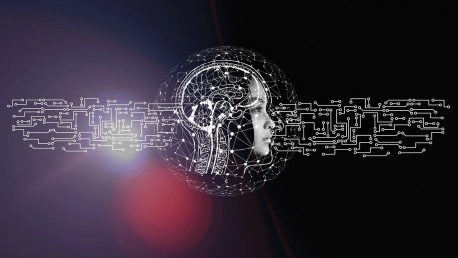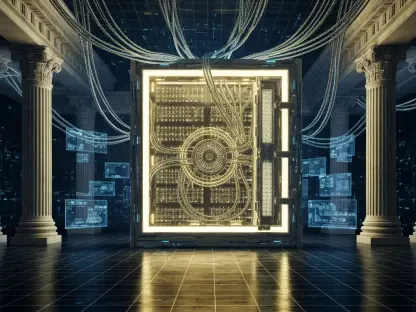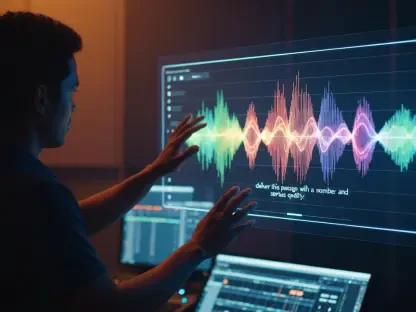Refik Anadol’s exhibition “Echoes of the Earth: Living Archive” marks a significant chapter in the merging of art with artificial intelligence, reshaping the digital media landscape. Within the walls of the Serpentine Galleries in London, Anadol’s exposition invites spectators into a groundbreaking experience that harmoniously conflates advanced technologies with artistic expression. This article sets out to unpack Anadol’s methodical narrative, unraveling the artist’s journey, technical mastery, collaborative ventures, and thematic visions embedded within his work. It’s an elucidation of how Anadol’s transparent approach to AI elevates the medium, compelling the art world to explore frontiers beyond traditional boundaries.
Demystifying AI Through Art
An Interdisciplinary Journey in Digital Media
Since 2008, Refik Anadol has been at the forefront of digital innovation in art, experimenting with algorithms, projection mapping, virtual reality, and artificial intelligence. With each project, Anadol pushes the envelope, leading us through a revolution in digital media practices. His chronology isn’t just a sequence of artworks; it’s the evolution of a medium, a constant arc bending toward the future. The “Echoes of the Earth: Living Archive” stands as a testament to his journey, demonstrating how far the synthesis of AI and art has come and the potential pathways it may carve for future creations.
Transparency in Creative Methodology
Anadol’s work at the Serpentine is a revelatory process that peels back layers of AI’s mystique to showcase the intricate dance of data and algorithms. Where once the data sources and generative processes were obscure, Anadol now fully discloses the raw materials and creative genesis that inform his pieces. This revelation aligns with a contemporary art world increasingly concerned with process over product, and the necessity of demystifying the digital in an age where information equates to power. Anadol’s approach thus provides a blueprint for how artists could navigate the digital era’s exigencies.
Technical Insights and Collaborative Spirit
From Data to Visual Storytelling
The data process wall intrinsic to the Serpentine exhibition unravels the transformation from raw data into AI-generated art. It’s a behind-the-scenes glimpse at the conversion of abstract datasets into thematic and aesthetic compositions. For instance, environmental datasets evolve into vibrant visualizations of coral reefs and rainforests, making the intangible tangibly mesmerizing. Anadol’s subjective interpretation of such data through the lens of AI invites onlookers to witness a metamorphosis that only digital artistry could facilitate.
Prestigious Partnerships in Artistic Exploration
Anadol doesn’t operate in isolation. His work is a product of prestigious partnerships, drawing on expertise from varied quarters—the Yawanawa Indigenous community’s knowledge, or the vast archives of institutions such as the Smithsonian. These collaborations are not simply a meeting of minds, they are an intersectional alloy that strengthens the artwork itself. By embedding insights from diverse sources, Anadol infuses his creations with a depth that perhaps no single perspective could offer.
Thematic Undercurrents and Aesthetic Experience
Nature and Connectivity in Digital Realms
At the heart of Anadol’s “Echoes of the Earth” lies an intricate tapestry of digital connectivity and a profound reverence for the natural world. The utilization of open-source AI models is a political choice as much as it is an artistic one; it’s a philosophical declaration of data democracy and a stance for environmental cognizance. Anadol intends for his work not just to be observed but to spur a participatory dialogue—probing viewers to engage with the critical issues of data privacy and ecological conservation.
The Intersection of Art, Space, and Technology
Whether it’s the dynamic contours of the Serpentine Galleries or the structured modernity of MoMA, Anadol tailors his works astutely to the architectural landscapes they inhabit. This mindful adaptation welcomes viewers into an immersive sphere where technology, art, and physical space intermingle. Strategic video projections breathe life into static walls, allowing the viewing space itself to become a participant in the artwork—extending the narrative and amplifying the viewer’s experience.
Cultural Implications of AI in the Artistic Sphere
Art and AI: A New Cultural Milestone
“Echoes of the Earth” is more than an exhibition; it’s a beacon for the growing intersection of art and technology. Anadol’s work acts as a catalyst, encouraging cultural institutions to leverage data for communal enrichment. This framework resonates with reports like “Future Art Ecosystems 4: Art x Public AI,” which stress the importance of an accessible and shared AI infrastructure within the arts. Anadol, alongside the Serpentine Galleries, isn’t merely showcasing art; they’re pioneering a cultural shift.
Continual Evolution in Digital Artistry
Refik Anadol perceives his Serpentine project as just one point along a broader trajectory. The exhibition’s transparency isn’t intended as the final word but as an invitation for ongoing discourse on the role and responsibility of data, AI’s fusion with art, and the relentless pursuit of innovation. By laying bare the intricacies of his digital techniques, Anadol helps demystify AI and positions his work as a catalyst for dialogue and discovery in the continually evolving landscape of digital artistry.The explorative nature of Refik Anadol’s work documented in “Echoes of the Earth: Living Archive” extends an open-ended narrative, positing his art as an evolving documentation of the synergetic potential between art and technology. As viewers engage with the substance and symbolism of his digital creations, they confront a profound, shared human experience. Anadol’s exhibition acts as a lodestone, drawing us to consider our stewardship of the natural world amidst the rising tide of AI advancements. It’s a reflection of how art—even art born from the most advanced technology—can return us to our most fundamental truths.









